1 min read
Tarantula Nebula (NIRSpec IFU)
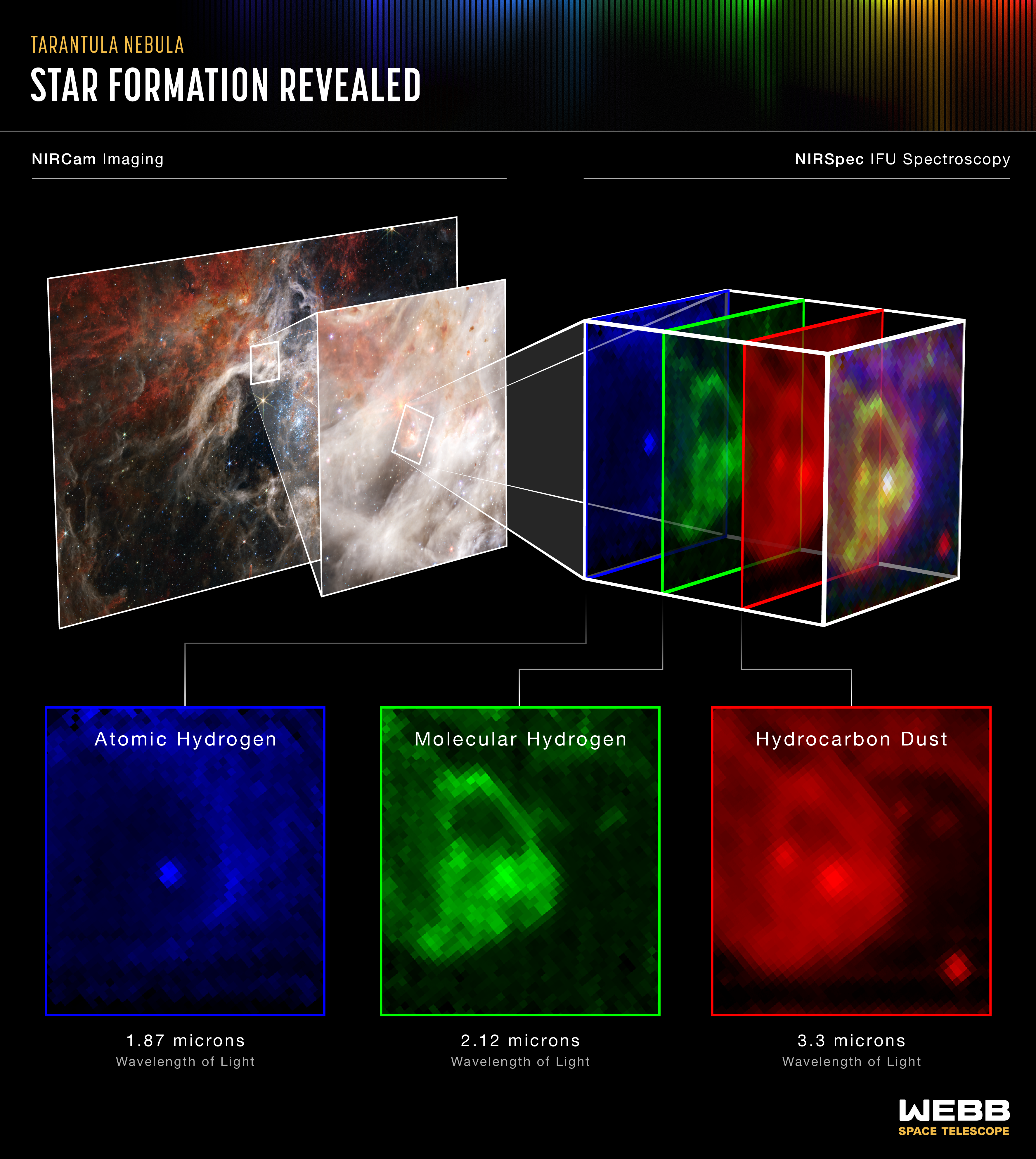
Webb’s Near-Infrared Spectrograph (NIRSpec) reveals what is really going on in an intriguing region of the Tarantula Nebula. Astronomers focused the powerful instrument on what looked like a small bubble feature in the image from Webb’s Near-Infrared Camera (NIRCam). However, the spectra reveal a very different picture from a young star blowing a bubble in its surrounding gas.
The signature of atomic hydrogen, shown in blue, shows up in the star itself but not immediately surrounding it. Instead, it appears outside the “bubble,” which spectra show is actually “filled” with molecular hydrogen (green) and complex hydrocarbons (red). This indicates that the bubble is actually the top of a dense pillar of dust and gas that is being blasted by radiation from the cluster of massive young stars to its lower right (see the full NIRCam image). It does not appear as pillar-like as some other structures in the nebula because there is not much color contrast with the area surrounding it.
The harsh stellar wind from the massive young stars in the nebula is breaking apart molecules outside the pillar, but inside they are preserved, forming a cushy cocoon for the star. This star is still too young to be clearing out its surroundings by blowing bubbles – NIRSpec has captured it just beginning to emerge from the protective cloud from which it was formed. Without Webb’s resolution at infrared wavelengths, the discovery of this star birth in action would not have been possible.
NIRSpec was built for the European Space Agency (ESA) by a consortium of European companies led by Airbus Defence and Space (ADS) with NASA’s Goddard Space Flight Center providing its detector and micro-shutter subsystems.
About the Object
- R.A. PositionR.A. PositionRight ascension – analogous to longitude – is one component of an object's position.05:38:42.4
- Dec. PositionDec. PositionDeclination – analogous to latitude – is one component of an object's position.-69:06:03.35
- ConstellationConstellationOne of 88 recognized regions of the celestial sphere in which the object appears.Dorado
- DistanceDistanceThe physical distance from Earth to the astronomical object. Distances within our solar system are usually measured in Astronomical Units (AU). Distances between stars are usually measured in light-years. Interstellar distances can also be measured in parsecs.170,000 light-years (52,000 parsecs)
About the Data
- Data DescriptionData DescriptionProposal: A description of the observations, their scientific justification, and the links to the data available in the science archive.
Science Team: The astronomers who planned the observations and analyzed the data. "PI" refers to the Principal Investigator.This image was created from JWST data from proposal: 2729. It is part of Webb Early Release Observations. The Early Release Observations and associated materials were developed, executed, and compiled by the ERO production team: Jaclyn Barrientes, Claire Blome, Hannah Braun, Matthew Brown, Margaret Carruthers, Dan Coe, Joseph DePasquale, Nestor Espinoza, Macarena Garcia Marin, Karl Gordon, Alaina Henry, Leah Hustak, Andi James, Ann Jenkins, Anton Koekemoer, Stephanie LaMassa, David Law, Alexandra Lockwood, Amaya Moro-Martin, Susan Mullally, Alyssa Pagan, Dani Player, Klaus Pontoppidan, Charles Proffitt, Christine Pulliam, Leah Ramsay, Swara Ravindranath, Neill Reid, Massimo Robberto, Elena Sabbi, Leonardo Ubeda. The EROs were also made possible by the foundational efforts and support from the JWST instruments, STScI planning and scheduling, Data Management teams, and Office of Public Outreach.
- InstrumentInstrumentThe science instrument used to produce the data.NIRSpec
- Exposure DatesExposure DatesThe date(s) that the telescope made its observations and the total exposure time.2 June 2022
- Object NameObject NameA name or catalog number that astronomers use to identify an astronomical object.Tarantula Nebula, 30 Doradus, 30 Dor, NGC 2070
- Object DescriptionObject DescriptionThe type of astronomical object.Emission Nebula in the Large Magellanic Cloud
- Release DateSeptember 6, 2022
- Science ReleaseA Cosmic Tarantula, Caught by NASA’s Webb
- CreditIllustration: NASA, ESA, CSA, STScI, Webb ERO Production Team
Related Images & Videos
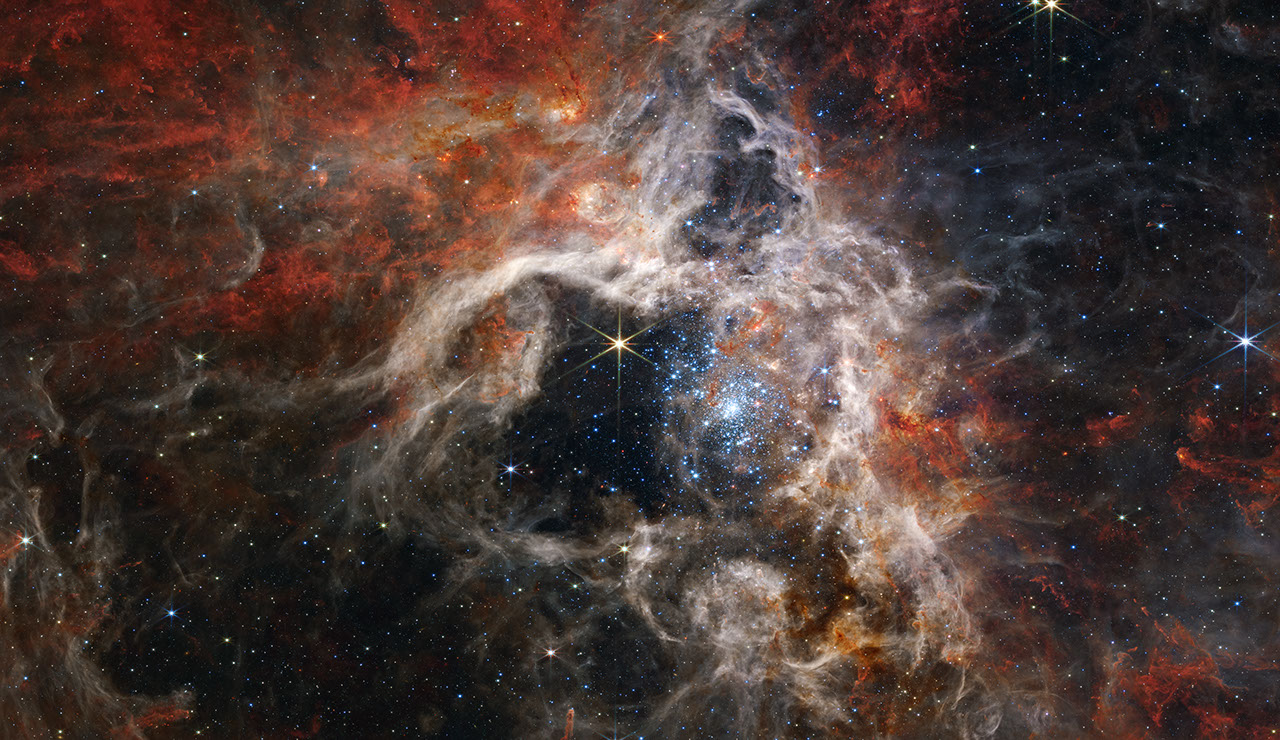
Tarantula Nebula (NIRCam Image)
In this mosaic image stretching 340 light-years across, Webb’s Near-Infrared Camera (NIRCam) displays the Tarantula Nebula star-forming region in a new light, including tens of thousands of never-before-seen young stars that were previously shrouded in cosmic dust. The most...
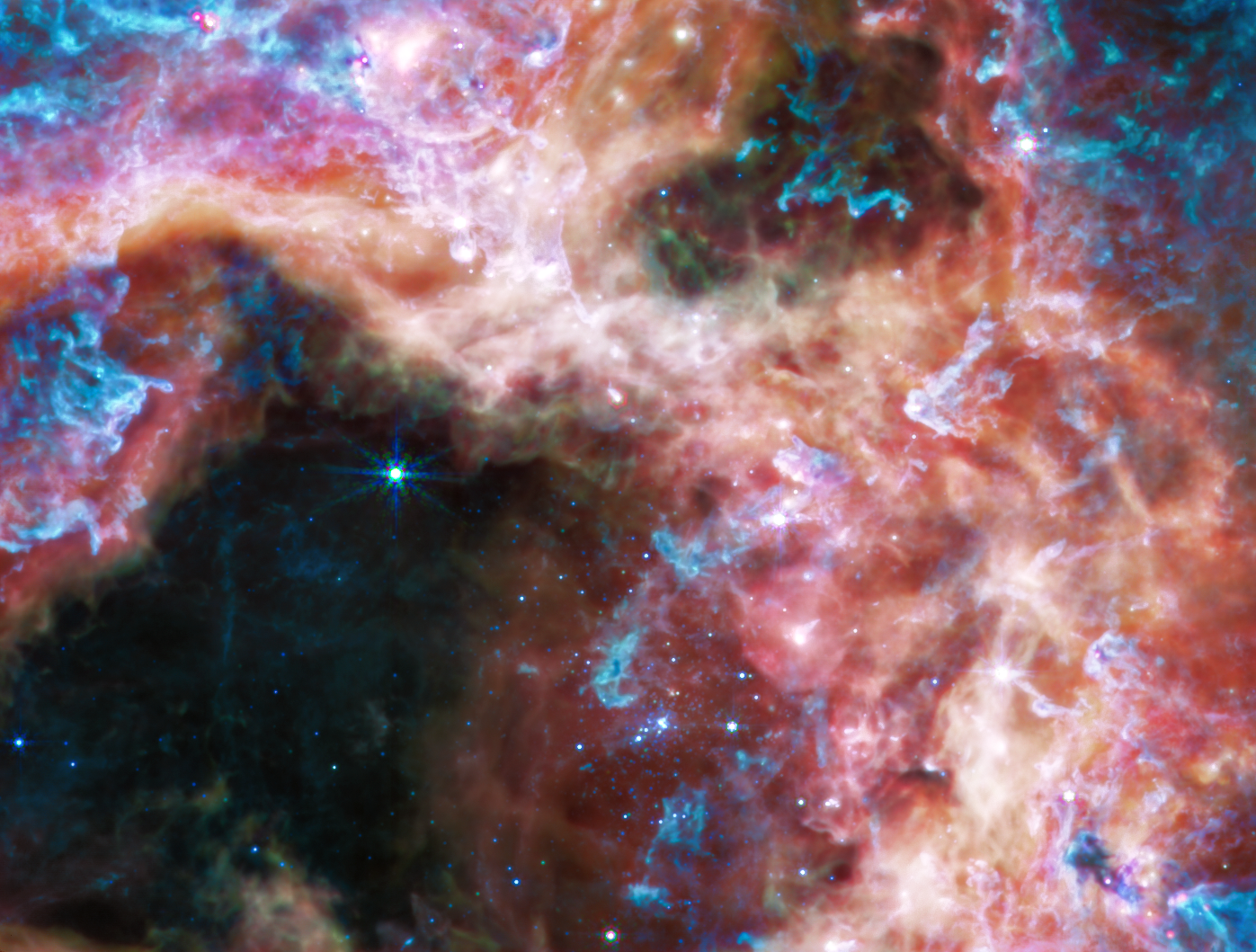
Tarantula Nebula (MIRI Image)
At the longer wavelengths of light captured by its Mid-Infrared Instrument (MIRI), Webb focuses on the area surrounding the central star cluster and unveils a very different view of the Tarantula Nebula. In this light, the young hot stars of the cluster fade in brilliance, and...
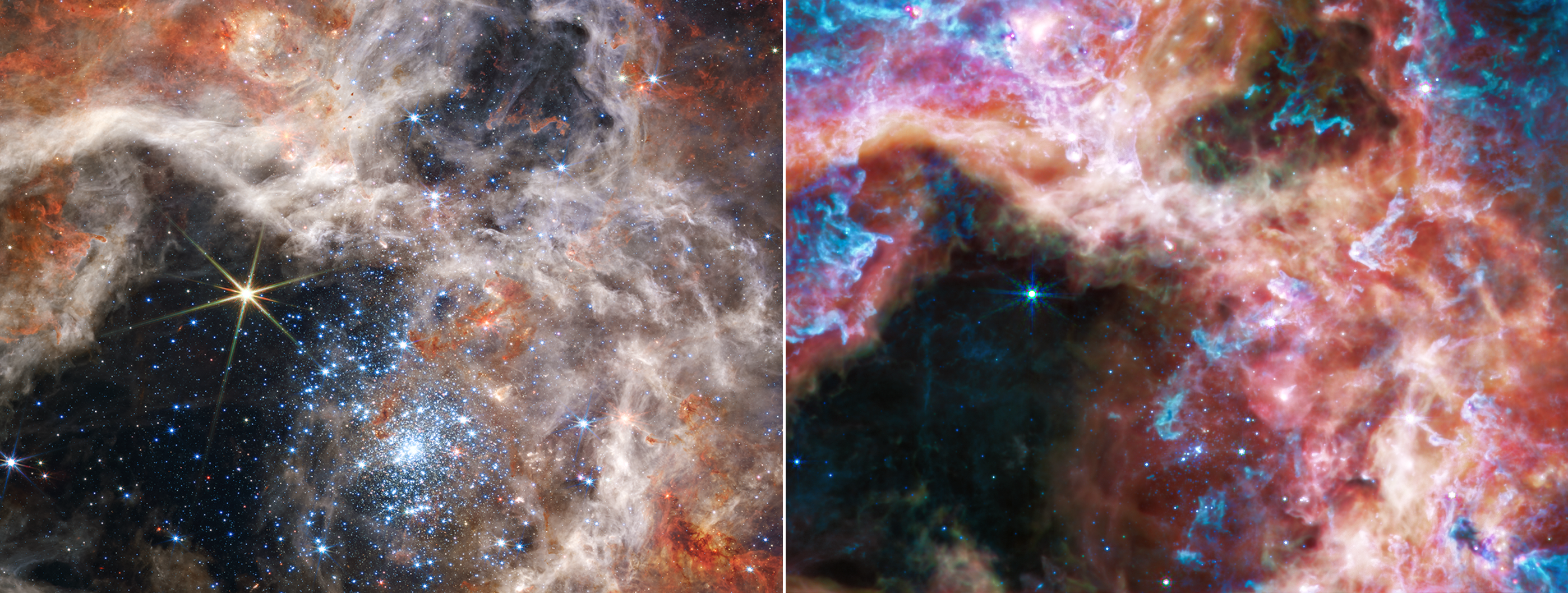
Two Views of the Tarantula Nebula (NIRCam and MIRI images)
A side-by-side display of the same region of the Tarantula Nebula brings out the distinctions between Webb’s near-infrared (closer to visible red, left) and mid-infrared (further from visible red, right) images. Each portion of the electromagnetic spectrum reveals and conceals...
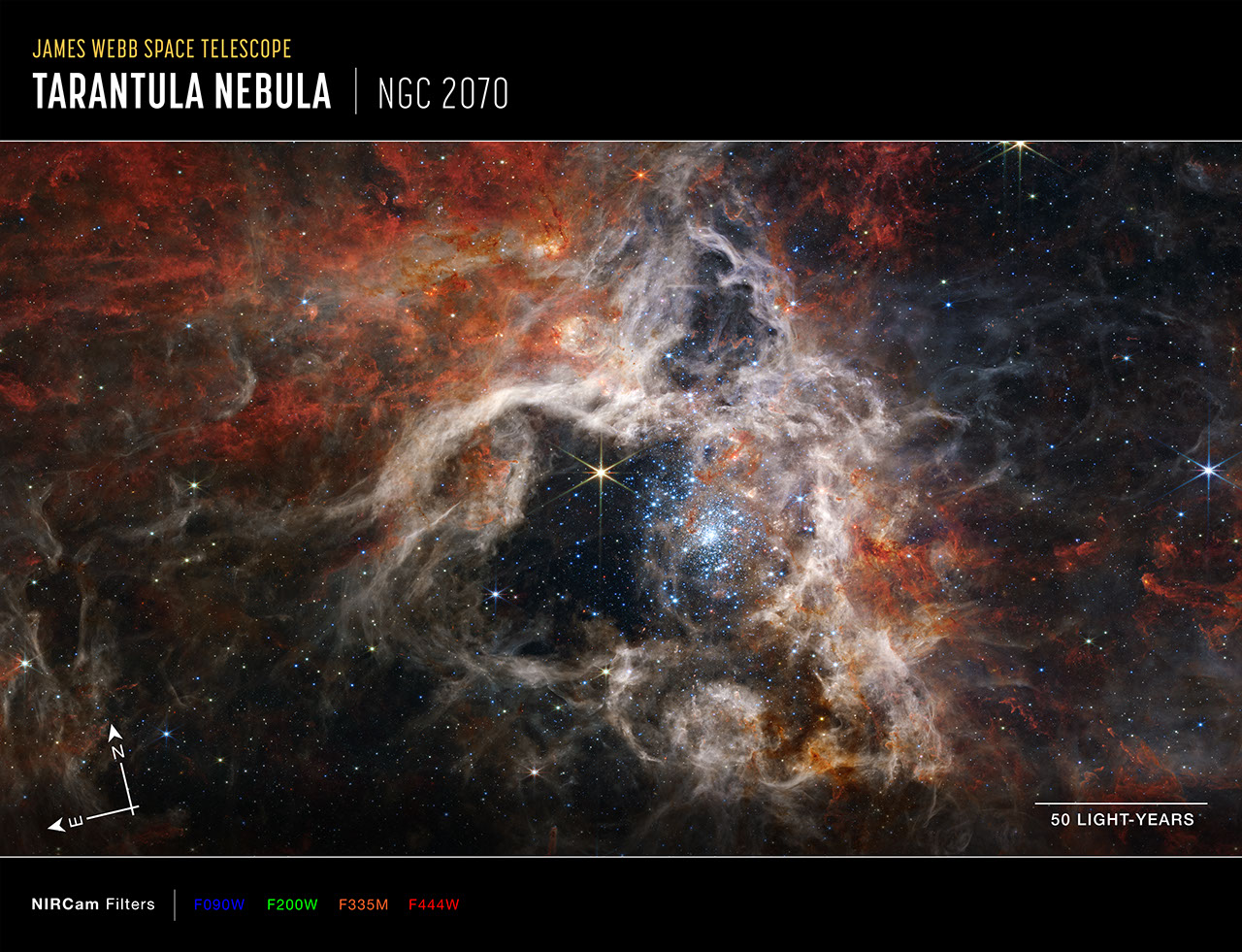
Tarantula Nebula (NIRCam Compass Image)
North and east compass arrows show the orientation of the Tarantula Nebula image on the sky. Note that the relationship between north and east on the sky (as seen from below) is flipped relative to direction arrows on a map of the ground (as seen from above). The scale bar is...
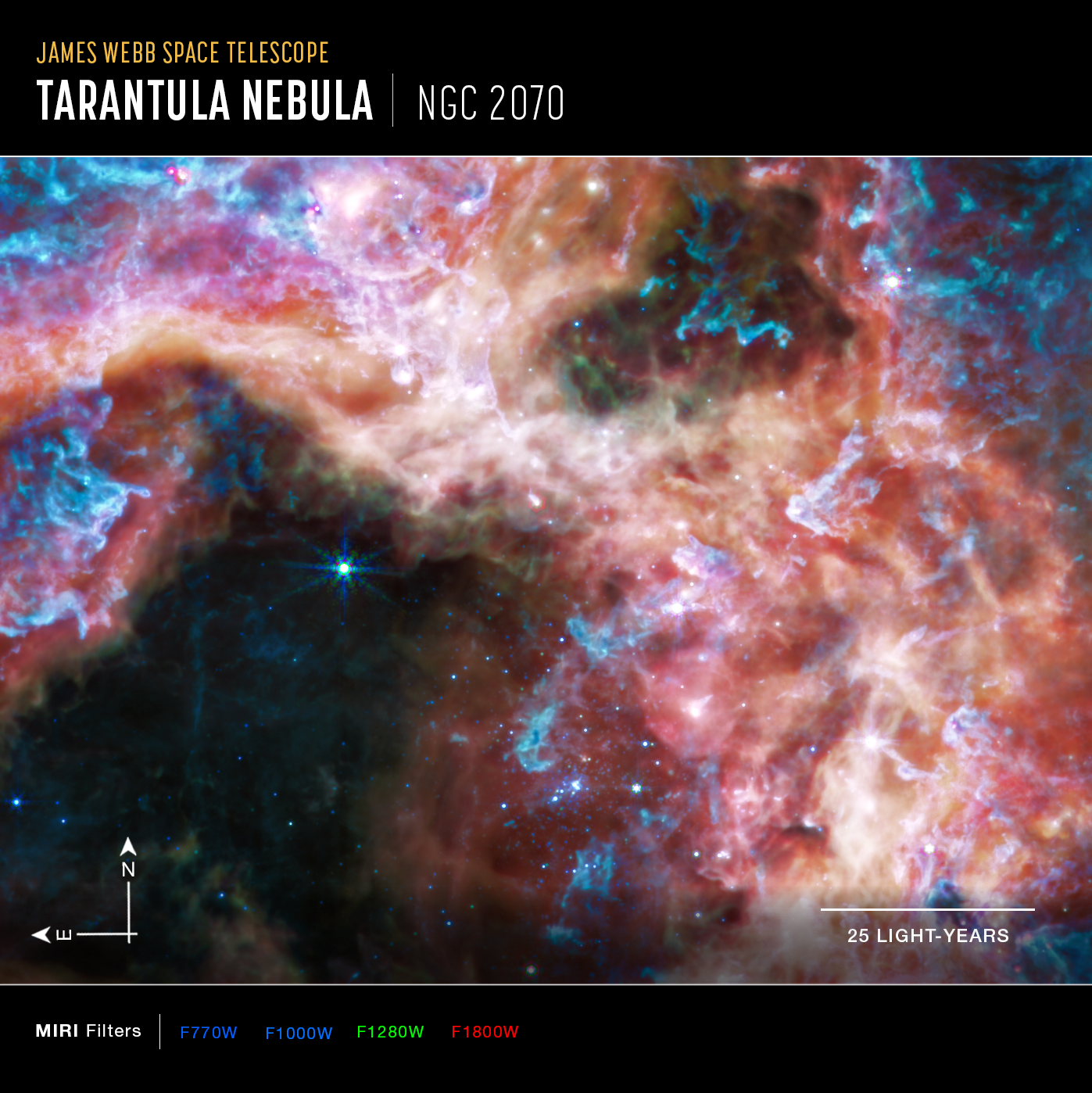
30 Doradus (MIRI Compass Image)
North and east compass arrows show the orientation of the Tarantula Nebula image on the sky. Note that the relationship between north and east on the sky (as seen from below) is flipped relative to direction arrows on a map of the ground (as seen from above). The scale bar is...
Share
Details
Laura Betz
NASA’s Goddard Space Flight Center
Greenbelt, Maryland
laura.e.betz@nasa.gov
NASA, ESA, CSA, STScI, Webb ERO Production Team































